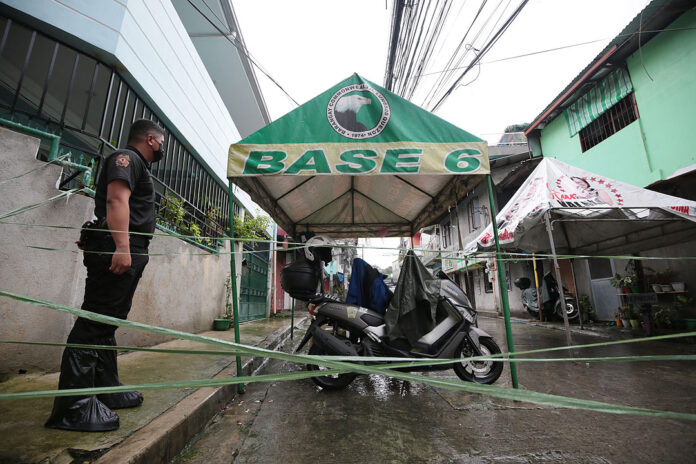By Kyle Aristophere T. Atienza, Reporter
METRO MANILA will be placed under a more relaxed quarantine level starting Sept. 8 even as the Philippines logged another record-breaking number of coronavirus infections on Monday.
The Health department recorded 22,415 coronavirus infections on Sept. 6, bringing the total to 2.1 million.
The death toll rose to 34,337 after 103 more patients died, while recoveries increased by 20,109 to 1,909,361 million, the Department of Health (DoH) said in a bulletin.
There were 159,633 active cases, 92.1% of which were mild, 3.3% were asymptomatic, 1.4% were severe, 2.48% were moderate and 0.6% were critical.
The agency said 68 duplicates were removed from the tally, 53 of which were recoveries. Seven recoveries were tagged as deaths. Eight laboratories did not submit data on Sept. 4.
The National Capital Region would be placed under a regular general community quarantine, the least restrictive lockdown level, from Sept. 8 to 30, Palace Spokesman Herminio L. Roque, Jr. told a televised news briefing.
Under a general lockdown, limited dine-in services and religious gatherings will be allowed again, Mr. Roque said.
LOCALIZED LOCKDOWN
He also said President Rodrigo R. Duterte has already approved “in principle” a plan to pilot-test localized lockdowns in the capital region.
An inter-agency task force has yet to adopt a resolution that will set the guidelines for the localized lockdowns, Mr. Roque said. “The guidelines will be released, at the latest, tomorrow.”
The localized lockdowns will cover specific streets, villages or other granular areas that will be decided upon by local governments.
The national government has said the new lockdown strategy will give Metro Manila mayors more flexibility to contain virus contagion.
Health Undersecretary Maria Rosario S. Vergeire, in a briefing on Monday, said localized lockdowns will help the national government focus its pandemic efforts on high-risk areas.
The new lockdown strategy would help the government boost its active case finding, intensify testing, and enhance isolation of cases, she said.
The Health agency will include the potential impact of granular lockdowns in its coronavirus analysis, she added.
The OCTA Research Group, which has been tracking the coronavirus data in the country, however, raised concern over the new lockdown system, saying it may affect the country’s pandemic control.
“We’re concerned that if this does not work, at a point when we’re actually seeing that the curve might plateau soon in two to three weeks,” OCTA fellow Fredugusto P. David told ABS-CBN News Channel. “There’s a chance that we might lose effective control of the pandemic and it will become much worse than it is.”
Mr. David said there is not yet enough evidence to prove that granular lockdowns can address a widespread community transmission.
On vaccination, more doses will be given to workers in the construction and manufacturing sectors starting Wednesday, according to Labor Secretary Silvestre H. Bello III.
The initial rollout for those specific sectors will provide 2,000 jabs, which is part of the 452,000 doses allotted for the workers, Mr. Bello said in a news briefing on Monday.
The additional vaccines for workers in different industries is an initiative of the Employers Confederation of the Philippines, in coordination with the Labor department, under the 1 Million Jobs Project, which aims to create that many work opportunities by December 2021 as part of the economic recovery plan.
Meanwhile, the DoH on Monday reported 279 new cases of the Delta variant, bringing the total to 1,273. Of these, 245 were local cases, 21 were returning migrant Filipino workers, and 13 cases are still being verified.
On the other variants, the country’s record were: Alpha, 2,424, and Beta, 2,697. The DoH also reported that 13 more people have been infected with the P.3 variant first detected in the Philippines.
Ms. Vergeire also said a new peak in COVID-19 deaths was seen in the previous week.
“At the national level, deaths have been increasing since the last week of July and a new peak was seen during the previous week,” she told a virtual news briefing.
Ms. Vergeire warned of more fatalities ahead. “This number is still expected to increase.”
“The average deaths per day in August of 2021 is now at 131, nearing the deaths last April 2021,” Ms. Vergeire said. “Partial data for September data shows that we have an average of 40 deaths per day.”
Central Luzon, Calabarzon, and Central Visayas were among the regions that recorded the highest number of deaths, she said. — with a report from Bianca Angelica D. Añago

